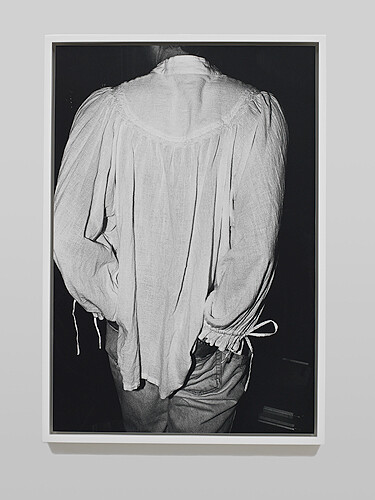Categories
Subjects
Authors
Artists
Venues
Locations
Calendar
Filter
Done
June 26, 2019 – Review
Eliza Douglas’s “Josh Smith”Eliza Douglas’s “Josh Smith”
Christina Catherine Martinez

When I took a fiction workshop in community college, the professor had a rather solemn habit of handing everyone’s manuscripts back to them with a gnomic phrase of critique or encouragement. He’d stop at your desk, plop the thing down, and say something like “you’re not delivering the goods” or “the text is incorruptible” and the rest of the class would blush or cringe in empathy. One day he lingered in front of Matt, uncharacteristically nonplussed, before gently handing over Matt’s paper. “I don’t know how else to say this,” he said, “but…lesser writers spend years trying to figure out how to write this badly.”
The rest of the class looked at one another, unsure of whether to laugh with Matt or at him, or ourselves.
Looking at Eliza Douglas’s work brings up all of this. Her paintings are awkward but somehow cool, deadpan but not cynical, unskilled but self-aware, surfeit with gall but not bravado. Douglas embodies an elusive up-to-the-second vibe, the je ne sais quoi of late-capitalist modernity, found also in the flat, sure-footed prose of Natasha Stagg, the low-register vocal fry of the girls of the Red Scare podcast. It’s a kind of affectlessness. (While writing …
November 20, 2013 – Review
Dianna Molzan’s “La Jennifer”
Andrew Berardini

None of these have titles.
I’d like to christen them instead with shifty poems, smoky strings of musical words, or better, give each a dull, quotidian name, culled from tombstones and television shows, like Doris or Louise, Fred or George. These are not the first things to live untitled. Everyday beauties, inexplicable happenstances caught in passing rarely get dubbed or designated either. The brown, seventy-year-old Ford truck with a wooden railroad tie for a bumper and license plate screwed cleanly in place. The single, red leather glove left on the bannister of the long outdoor staircase in the woods, a few drizzled drops gleaming in the bluish light of the overhead LED. The iridescent shimmer and hushed crinkle of a pink chiffon prom dress spotted under a bridge. Casual sightings: ephemeral, rare, nameless.
Dianna Molzan’s crafty ensemble here at Overduin and Kite is more people than things, a weird little gang of frames and canvases left unnamed by their creator; however, each and every one of them is quietly extraordinary. In the first room, a couple of cosmic crocodile eyes stare down an aged teenaged girl completely emptied out except for some still scrunching scrunchies, rendered soft black like a leather jacket …
December 22, 2011 – Review
Eileen Quinlan’s "Constant Comment"
Kevin McGarry

Eileen Quinlan’s second exhibition at Overduin and Kite explores an array of departures from the old tricks of her “Smoke and Mirrors” series (2004–2007): signature photographic still lifes of colored light passing through said materials, capturing all the flecks and blemishes that mar the ethereal compositions with engrossing, analog textures. Quinlan’s fascination with photographic mechanics and accoutrements continues here, and like the tableaux through which she has established a self-reflexive discourse on image-making, the discrete elements of this show collude as a carefully scattered puzzle.
To begin with the oddest inclusions, there are three black-and-white photographs dated 2011 but which the artist shot many years ago when she first took up photography: Sisters of Mercy, depicting the rough granite contours of the castle walls of a former convent near her New England childhood home; The Pond, a back-of-the-head self-portrait in which the artist’s figure slips into surrounding bog brush; and Paul as Poet, framing the back of a man in a white tunic and jeans. These images set the tone for subjective excavations, tunneling into matters of difference and repetition not with regard to seriality as much as context, and, specifically, how re-situating images in different temporal and relational contexts alters …
